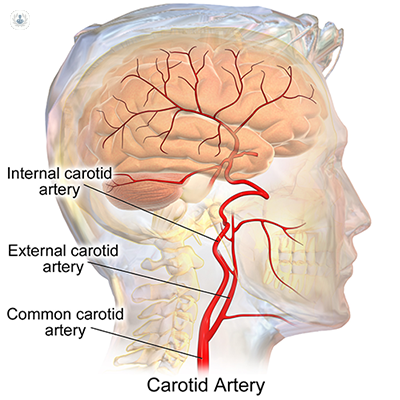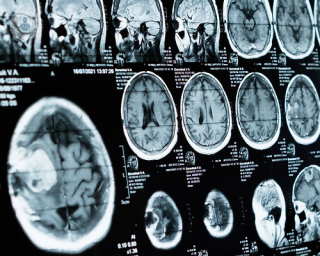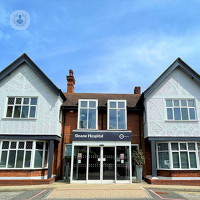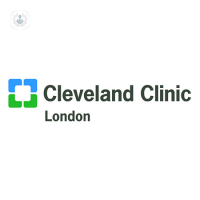Transient ischaemic attack (TIA)
What is a transient ischaemic attack?
Transient ischaemic attacks (TIA) occur when blood flow to part of the brain stops for a short period of time. Unlike a cerebral vascular accident (CVA), a TIA lasts only for a few hours and does not cause permanent brain tissue damage.
TIAs are also unlike strokes where the blood flow remains blocked, causing brain damage. However, due their similarity in nature, some people refer to TIAs as ‘mini-strokes’, and often having a TIA can be a sign that you could later experience an actual stroke.

What are the symptoms of transient ischaemic attacks?
The symptoms of TIA are the same as those of stroke, but last for only a short period of time. The symptoms of a transient ischaemic attack are:
- Vision changes
- Feeling unstable
- Difficulty reading or talking
- An inability to recognise objects or people
- Loss of balance and coordination
- Numbness, weakness or tingling in one side of your face
- A tingling sensation or numbness in the arm or leg on one side of the body
What causes transient ischaemic attacks?
The loss of blood flow to the brain is caused by a blockage in one of the blood vessels which supplies it. As the blood flow becomes interrupted by the blockage, the brain cannot function as it usually does, leading to the symptoms patients typically experience.
In TIAs, this blockage of the blood vessel resolves itself quite quickly, meaning that no serious damage is caused to the brain. This differs from cases of stroke, where the blockage causes a lengthier halt in blood flow to the brain which can cause significant damage.
The most common cause of the blockage that occurs in a TIA is a blood clot that has formed elsewhere in the body and has travelled to the brain. Blockages can also be caused by air bubbles or pieces of fatty matter. In rare cases, bleeding in the brain (haemorrhage) can result in a TIA. TIAs can also sometimes caused by a very sudden drop in blood pressure, which results in reduced blood flow to the brain but this is very unusual.
Blood clots are the most common cause of the blockage of the blood vessel which supplies the brain, resulting in a TIA. These clots, which can form in any part of the body before reaching the brain, may develop in areas where a fatty build-up has caused an artery to become narrow or blocked over time. These fatty deposits are referred to as plaques and the process in which they narrow the artery is called atherosclerosis.
Arteries can become narrower through the natural ageing process but some other factors can accelerate the process. These include:
- Smoking
- High blood pressure
- Obesity
- High levels of cholesterol
- Diabetes
- Excessive consumption of alcohol
- Atrial fibrillation
What risk factors make a person more likely to suffer from a transient ischaemic attack?
There are also some risk factors that make certain groups of people more susceptible to TIAs. These include:
- People aged over sixty
- People of south Asian, African or Caribbean descent have a higher TIA risk, due partly to the higher rates of high blood pressure in these groups
- Other pre-existing health conditions, such as diabetes
- Overweight people
- People with a high fat and high salt diet
- Smokers and heavy drinkers

Can transient ischaemic attacks be prevented?
Although some factors which can make a person more likely to suffer a TIA are unavoidable, there are numerous lifestyle changes that can help reduce TIA risk. These include:
- Quitting smoking
- Limiting alcohol consumption
- Maintaining a healthy weight
- Exercising frequently
- Managing high blood pressure, if applicable
- Managing diabetes, if applicable
- Eating a healthy diet that is lower in transgenic fats, cholesterol and salt
How are transient ischaemic attacks diagnosed?
If the symptoms of a TIA are experienced, it is important to seek medical attention as soon as possible due to the elevated chances of stroke. However, as TIAs do not last very long, it is likely that the symptoms will have subsided by the time you see a doctor.
After an initial assessment by the doctor, further tests will be done to establish the cause behind the TIA. To confirm diagnosis, several tests may be performed which look for possible causes of a TIA.
- A blood test can show whether the patient has diabetes or high cholesterol.
- A blood pressure test can asses if high blood pressure (hypertension) is present.
- An electrocardiogram (ECG) can detect abnormal heart rhythm and assesses the heart’s electrical activity which can indicate conditions such as atrial fibrillation.
- Carotid ultrasound testing can be used to establish if there are any blockages or narrowing present in the arteries of the neck which lead to the brain.
- Brain scans, such as MRI may be used to locate which area of the brain as affected during the TIA if this cannot be determined in another way
How are transient ischaemic attacks treated?
Treatment is based on treating the consequences of the TIA and preventing a future stroke. Although the TIA may have resolved itself with no lasting damage, it is a warning sign that you are at increased risk of a full stroke.
Once the cause of the TIA has been established, it can be determined which course of treatment best lowers your individual risk of a future stroke. Treatment may include medication, lifestyle changes or surgery.
Many people who have suffered a TIA will need to take some medications to lower their risk of future stroke. This may include aspirin, antiplatelet or anticoagulant medicine which helps to lower the risk of blood clots forming. If a link has been established between high blood pressure or elevated cholesterol and a TIA in a patient, they may be prescribed medicine to help them regulate this, such as beta blockers or statins.
The same lifestyle changes which can prevent a TIA can also help to prevent a stroke. By eating a healthy and balanced diet, exercising regularly and lowering alcohol take, patients can significantly lower their stroke risk. Stopping smoking can also dramatically reduce the likelihood of future stroke.
Surgery is also an option for some patients who have significant atherosclerosis. During the procedure, known as carotid endarterectomy, the fatty deposits within the carotid arteries (the arteries that deliver blood to the brain) which block or narrow the artery are removed to allow blood to flow effectively.
What type of doctor treats transient ischaemic attacks?
A number of specialists may be consulted to treat a transient ischaemic attack depending on its cause, including vascular surgeons and neurologists. Geriatricians may also treat ISAs should they occur in older patients.












